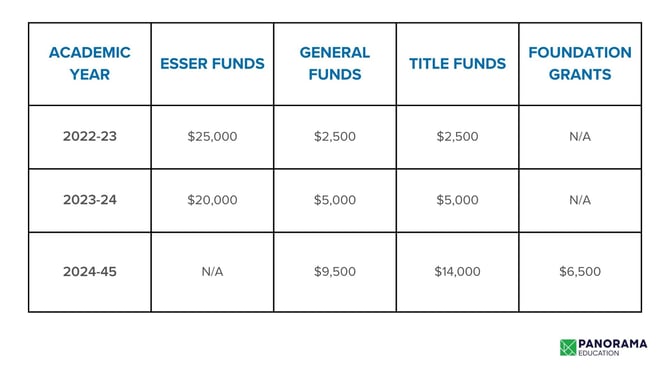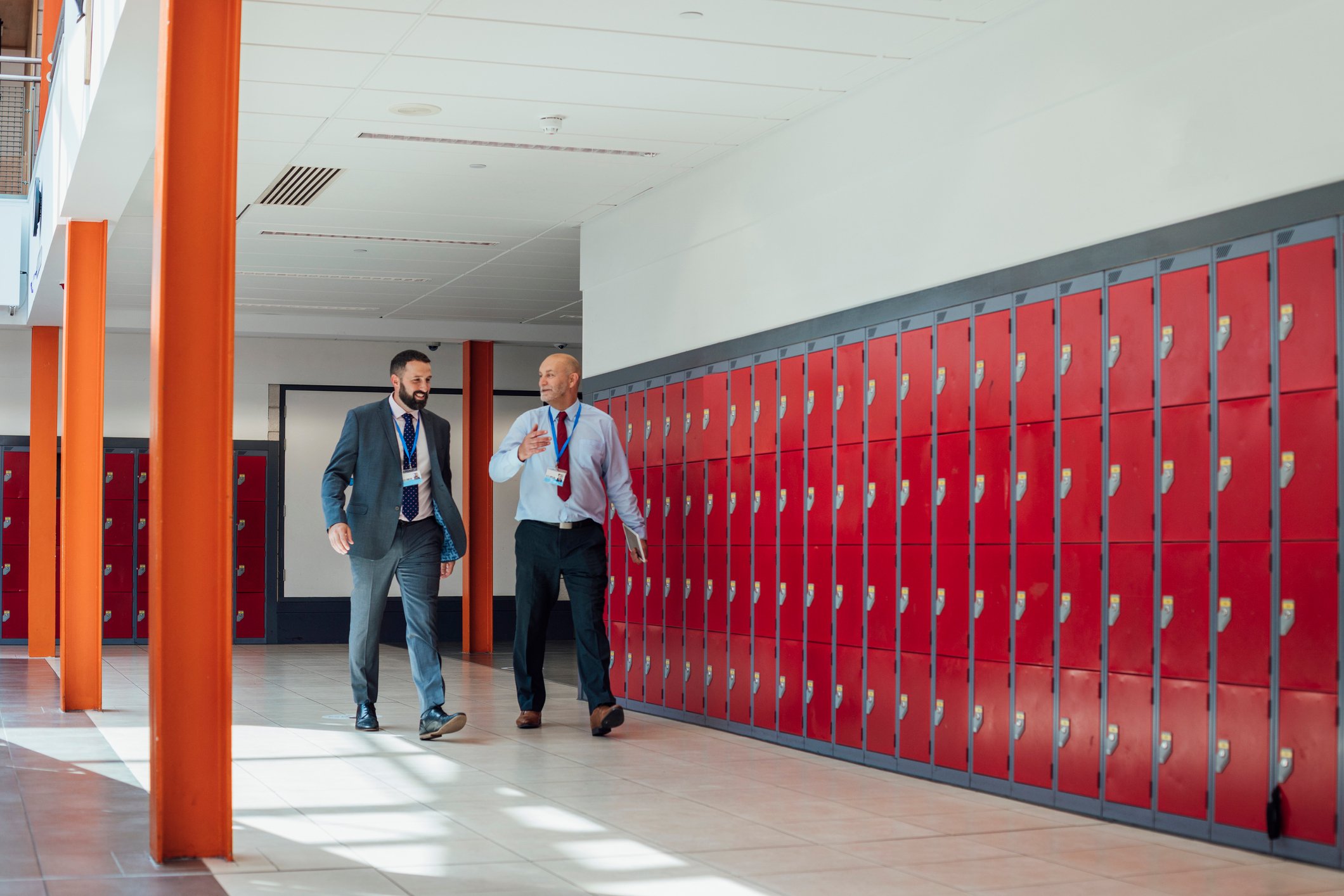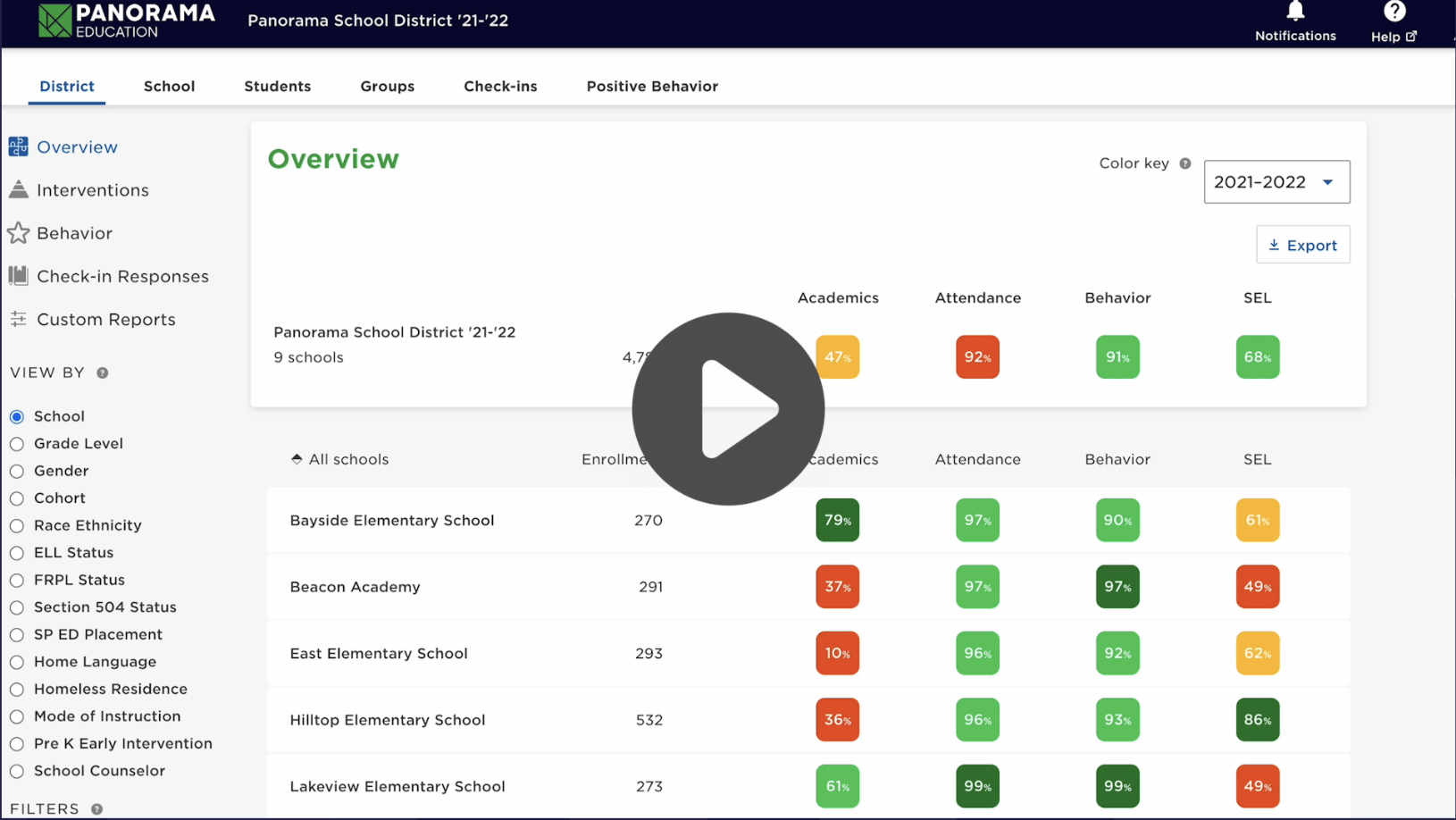In the complex landscape of educational administration, securing and managing funding constantly presents a significant challenge for district leaders and their school boards.
Amidst an array of financial hurdles, one phrase has recently surged to the forefront of budgetary discussions: “ESSER funding cliff.”
While this fiscal cliff certainly looms large, the end of ESSER funds presents a unique opportunity for district leaders to usher in a new era of innovative, strategic, fiscally-responsible foresight. This shift–while challenging–opens up avenues for reimagining, sustaining, and enhancing student achievement and well-being in the post-pandemic landscape.
This article will provide district leaders with pertinent information regarding ESSER deadlines. It also outlines recommendations for embracing this transition with a solutions-focused and proactive mindset.
Table of Contents:
- ESSER Funds: Key Details and Deadlines
- Strategies for Navigating the ESSER Funding Cliff
- Next Steps for District Leaders
|
Key Takeaways: ESSER Dollars Must Be Fully Obligated By September 30, 2024
|
ESSER Funds: Key Details and Deadlines
The introduction of the Elementary and Secondary School Emergency Relief (ESSER) funds as part of the Coronavirus Aid, Relief, And Economic Security (CARES) Act was passed by Congress in March of 2020. The goal was to provide financial assistance to K-12 school districts across the country to address the impact of the pandemic.
These funds were allocated to state educational agencies (SEAs) and distributed to local educational agencies (LEAs), also known as districts. Funds were intended to support educators in both addressing key areas of need (e.g., learning loss, student and staff well-being). Additionally, funds could help modernize systems with innovative approaches to teaching and learning, assessment, and student support.
The flexibility granted to districts in using their ESSER funds helped catalyze the launch of innovative solutions aimed at facilitating students' recovery–socially, emotionally, behaviorally, and academically–from the pandemic. This autonomy enabled investments in critical support for the most vulnerable students and the enhancement of educational and enrichment opportunities.
However, come the 2024-25 academic year, districts (which have collectively spent $60 billion in ESSER funds over the past two years) will be tasked with finding creative and fiscally responsible ways to sustain educational initiatives in a post-ESSER world. ESSER III dollars must be fully committed by September 30, 2024, with a January 30, 2025 deadline to liquidate (i.e., actually spend) the funds.
.jpg?width=10979&height=5946&name=Esser%20Infographic%20(4).jpg)
Extension Opportunities
It is important to note that although the last day to sign an ESSER-funded vendor contract is September 30, 2024, the U.S. Department of Education has created avenues for districts to push back the liquidation date. Many contracts are eligible for an extension that allows vendors to continue delivering certain types of services until March 28, 2026.
This means that states are able to apply on districts’ behalf for up to fourteen additional months to spend ESSER money on solutions addressing topics such as tutoring, mental well-being services, and capital improvement projects. The deadline for SEAs to submit extension requests is December 31, 2024 and these applications cannot be submitted until September 30, 2024.
Strategies for Navigating the ESSER Funding Cliff
While the pandemic presented unforeseen and unpredictable challenges, the upcoming financial difficulties associated with the ESSER fiscal cliff are well within districts’ forecasting capabilities. This foresight allows administrators to make informed, proactive decisions, safeguarding the advancements to student support that were established over the past few years.
Contact our Grants Team to Learn More About Post-ESSER Funding Options
Strategy #1: Gradually Increase the Use of General Operating Funds
With the grant period for ESSER funds coming to a close, district leaders and school boards can work to implement a phased tapering of ESSER funds. This involves gradually diminishing a reliance on them before the 2024-25 academic year. In this way, districts can progressively incorporate general operating funds or other grant opportunities to fund products and services that were purchased with ESSER funds.
Consider the below example for funding a $30,000 per year student support solution:

By strategically allocating general funds over time, districts can maintain continuity in student support solutions, ensuring a smooth financial transition without disrupting essential services.
Strategy #2: Retroactive Reimbursement
ESSER funds are eligible to be used to retroactively reimburse other sources of funds that were spent on pandemic-related costs back to March 13, 2020.
This approach encourages districts to review past expenses that are eligible under federal guidelines, but were not funded using ESSER funds, such as:
- Technology upgrades for remote learning
- Sanitization efforts
- Professional development for teachers
By identifying and reallocating funds spent on these critical areas, districts can free up their budgets, allowing for reinvestment in other pressing needs or innovative educational projects. This foresight not only maximizes the utility of ESSER funds, but also enhances financial flexibility for future planning.
Strategy #3: Front-Load Implementation Expenses
Implementing new tools and systems often incur high initial costs, with lower costs to continue maintenance and operation in subsequent years. Because ESSER funds do not have supplanting provisions, they can be used to absorb the cost of investing in a new product before transitioning the ongoing costs to more sustainable financial sources.
This strategic investment strategy lays the groundwork for transitioning ongoing operational costs to regular budget lines in future fiscal years, ensuring the sustainability of these initiatives. By front-loading costs, districts can take advantage of ESSER funds to make significant, once-off investments in educational resources that will incur lower costs over time while benefiting students and teachers in the long-term.
Strategy #4: Integrate ESSER With Other Funding Streams
To proactively smooth the impending fiscal cliff, districts can “braid” ESSER funds with general funds (and other federal sources). This approach allows for the distribution of costs across various funding streams, easing the financial burden of maintaining long-term initiatives. In this way, the cost of a long-term investment can be split between funding sources—balancing the need for enhanced student support with sustainability.
By identifying synergies between ESSER fund eligibility and other grants or funding opportunities, districts can create a more resilient financial strategy. This not only ensures the continuity of essential services and programs but also promotes a diversified funding model that can withstand the cessation of ESSER funding. This ultimately ensures long-term educational quality and access.
Strategy #5: Prioritize Evidence-Based Tools and Services
The federal standards for evidence and impact under the Every Student Succeeds Act (ESSA) require that certain funds be spent on evidence-based approaches and solutions.
 Source: United States Office of Elementary and Secondary Education
Source: United States Office of Elementary and Secondary Education
Prioritizing evidence-based solutions ensures that ESSER funds are invested in programs and initiatives with proven effectiveness. Over the next several months, districts must be particularly selective about continuing programs that provide the most value to students and educators. This means focusing on tools and services that have demonstrated success in improving academic performance, student engagement, and teacher effectiveness.
By strategically evaluating potential investments in this way, district administrators and their school boards can approach upcoming funding decisions with a keen focus on sustaining initiatives that have demonstrated effectiveness.
|
Frequently Asked Questions: 1. What does the "ESSER cliff" refer to? The ESSER funding cliff refers to the point at which the temporary federal funding provided through the Elementary and Secondary School Emergency Relief (ESSER) funds, as part of the CARES Act, comes to an end. 2. When will ESSER funds be no longer available? ESSER III funds must be fully obligated by September 30, 2024, and spent by January 30, 2025. 3. Can Panorama Education support my district with transitioning to post-ESSER funding? |
Next Steps for District Leaders
As we approach the conclusion of the ESSER funding chapter in K-12 education, it is clear that the path forward is both a challenge and an opportunity. This moment calls for district leaders to lean into data-driven decision-making and strategic planning, focusing on the sustainability of impactful programs and equitable student support.
By prioritizing initiatives that yield the most benefit and embracing innovative, fiscally responsible approaches, we can transform potential constraints into opportunities for growth and resilience. It's about more than navigating a budgetary shift; it's an opportunity to refine our educational priorities, ensuring every decision contributes to a stronger, more focused path forward for all students.






